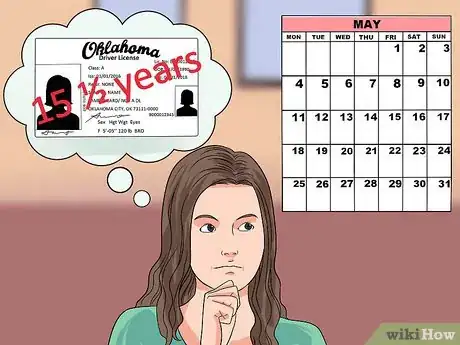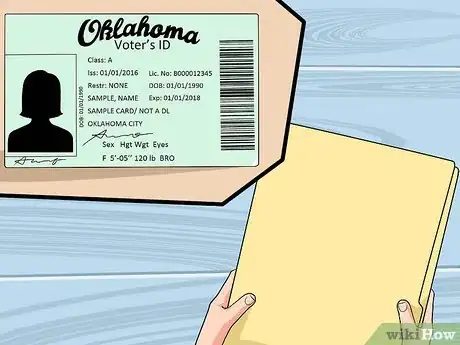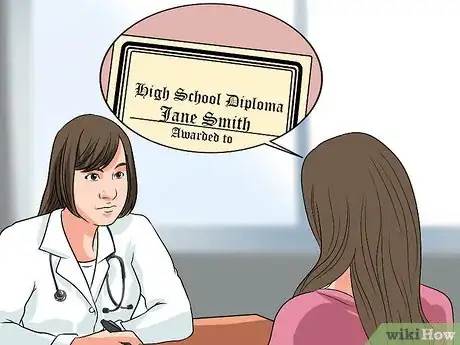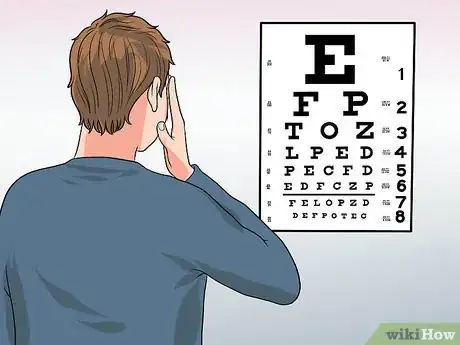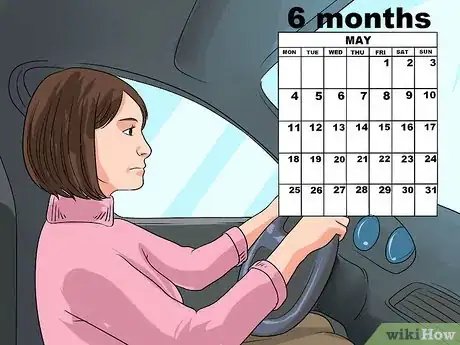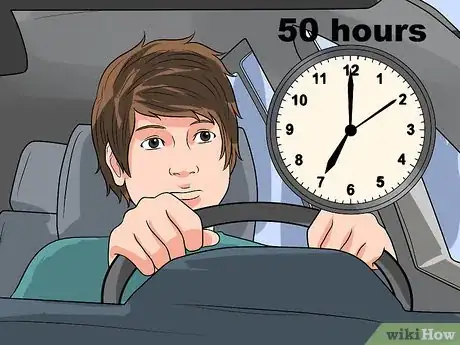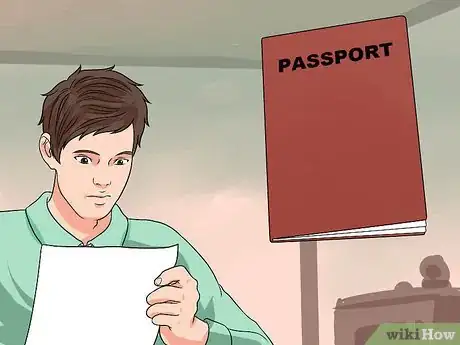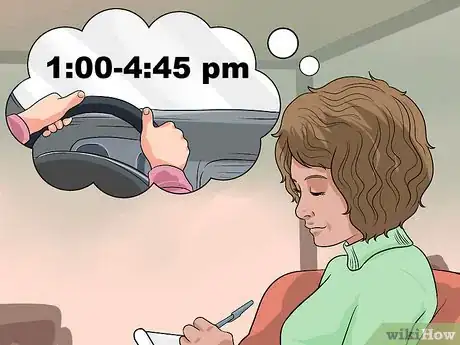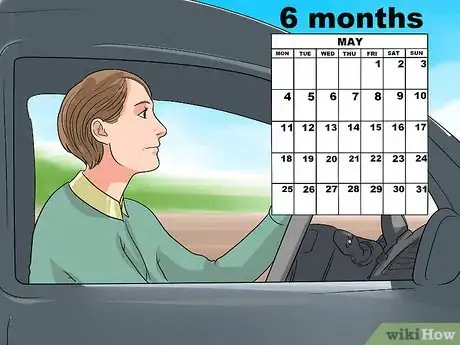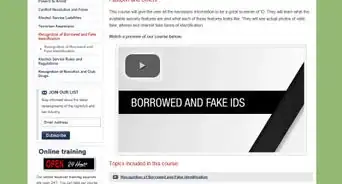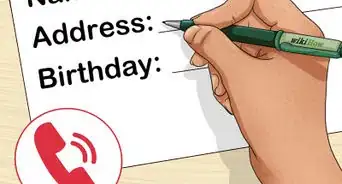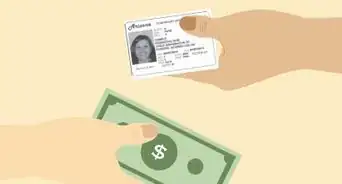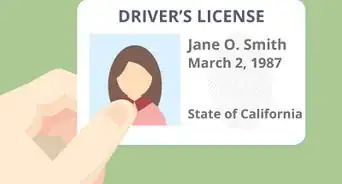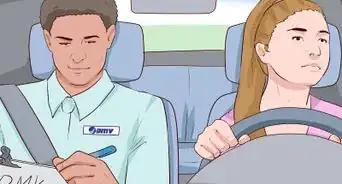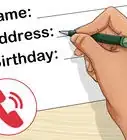This article was co-authored by Clinton M. Sandvick, JD, PhD. Clinton M. Sandvick worked as a civil litigator in California for over 7 years. He received his JD from the University of Wisconsin-Madison in 1998 and his PhD in American History from the University of Oregon in 2013.
This article has been viewed 38,408 times.
Oklahoma uses a graduated driver's licensing process. Individuals are allowed to begin driving with a certified instructor at age 15. Six months later, driving students can receive a permit; and 6 months after that, an intermediate license. For most people, students must also have driving hours under their belt and complete a driver's education course. You will need to know what documents to pull together and how to prepare for the written test in order to get your first learner's permit. After that, you need to prepare for the driving skills test to move from the permit to the intermediate license.
Steps
Getting an Initial Learner’s Permit
-
1Study the Oklahoma driver’s manual. You need to study the manual because it will contain the rules of the road, as well as general information about operation of a motor vehicle.
- You can obtain a copy of the Oklahoma driver’s manual by downloading it online at https://www.dps.state.ok.us/dls/okdm.htmlor visiting an office of the Oklahoma Motor License Agency (known as Tag Agents).[1]
-
2Wait until you are old enough to apply. Before you can get a learner’s permit in Oklahoma, you must be at least 15 1/2 years old. You are allowed to begin studying and preparing before that, but you must wait until you are 15 1/2 to apply.[2]
- If you are over 18, you may apply directly for an intermediate license and skip the learner’s permit.[3]
Advertisement -
3Gather the required documents. To get your learner's permit, you will need to take two forms of identification and your social security number to the Driver License Exam site. For most people, the first form of identification will be a birth certificate or U.S. Passport. Foreign nationals or permanent residents may produce a foreign passport and an I-94 card, or an alien registration card issued by the U.S. Citizenship and Immigration Service. The second form of identification is to prove your age and identification. This may be a second (non-duplicate) item from the primary list, or one of the following:[4]
- For someone under 18 years of age, an affidavit signed by the parent or legal guardian, attesting to age
- A photo ID card issued by an Oklahoma public or private school
- A gun permit, pilot’s license or hunting/fishing license issued by the state of Oklahoma
- An Oklahoma voter ID card
- A social security card
- A high school diploma
- A military identification card
- An Oklahoma tribal photo identification card
-
4Get a letter from your high school. If you are under 18 years old, you need a letter or other documentation from your high school that attests that you are a currently enrolled student and have passed the eighth grade state reading test.[5]
- If you cannot get a school letter, you may provide a copy of a high school diploma, proof of earning a GED, proof of enrollment in a GED program, proof of current home schooling, or proof of employment that shows that you are working at least 24 hours per week.
-
5Demonstrate proof of driver’s education, if you are under 16. If you are applying before your 16th birthday, you must bring proof that you are enrolled in a driver’s education class, either at your school or through a private agency. If you are over 16 and have completed such a course, the proof is not required but you are encouraged to bring it along.[6]
-
6Go to an Exam office. When you have all the documentation prepared, visit a convenient Driver License Exam site office. You must apply for a learner’s permit in person. There is no online substitute.[7]
- A parent or guardian must accompany you, if you are under 18 years old.
- You can find a complete list of Driver License Exam Sites at http://www.dps.state.ok.us/dls/exam_sites.php.
- Take the written test and vision test. The written test will cover information from the Oklahoma Driver’s Manual. The test consists of questions related to Driving safety and courtesy, signals, signs and markings, intersections and turns, lane usage and maneuvers, and inclement weather driving.
- You can find practice tests online at DMV.com, by following the links to information for Oklahoma. The written test includes 25 questions. You must get 20 right to pass the test.
- Pay the required fee. The state charges a $4.00 application fee each time you take the written test. When you pass the written test and obtain your learner’s permit, you then must pay a $33.50 license fee.
- For example, if you pass the test on your first try, the total fee will be $37.50 ($4.00+$33.50). If you fail the written test once but pass on your second try, you will pay $4.00 each time you take the test, so your total fee will be $41.50 ($4.00 + $4.00 + $33.50).
-
7Obtain your learner’s permit. After you pass the written test and vision test, you will have your photograph taken and you will receive your learner’s permit.
- Your learner’s permit allows you to drive with a licensed driver over 21 years old in the car.[8]
Obtaining an Intermediate License
-
1Drive with you learner’s permit for six months. If you are under 18 years old, you must use your learner’s permit for at least six months before you are eligible to move on to an intermediate license.
- If you obtain a learner’s permit over age 18, you must drive with the learner’s permit for at least 30 days.
- If you are over 18, you may apply directly for an intermediate license. The learner’s permit is not required.[9]
-
2Keep a driving log for at least 50 hours. Using your learner’s permit, you must drive at least 50 hours with a licensed driver over 21 years old, who has been licensed for at least two years. At least ten of these hours must be at night.
- When you complete the 50 hours, a parent or guardian must sign an affidavit, available [| here]. You will need this affidavit to get your intermediate license.
-
3Gather the required documentation. To apply for an intermediate license, you will need to take one form of primary identification (usually a birth certificate or passport), one form of secondary identification (usually a social security card or other state-issued ID), and your social security number. In addition, you need the following items:[10]
- In addition to the required identification documents, you must have a completed Insurance Security Verification Form. This form must match the Vehicle Identification Number (VIN) for the car that you will be driving for the road test.
- Driver’s education completion certificate. This is actually only a requirement if you are between the ages of 16 and 16 1/2. If you are older than 16 1/2, you may show proof of driver’s education, but it is not required.
- Parent Affidavit of Driver Training. If possible, you should have your parent or guardian accompany you to apply for your intermediate license. They will then complete the Affidavit of Driver Training, to certify that you completed 50 hours behind the wheel. If your parent or guardian cannot accompany you, then they need to complete the form and have their signature verified by a notary public, and you then need to take the form with you. The form is available [| here]. The Parent Affidavit is not required if you are over 18.
-
4Schedule a driving skills test. When you are ready, contact a convenient Driver License Exam site office to schedule a driving skills test.[11]
- You can find a complete list of Driver License Exam Sites at http://www.dps.state.ok.us/dls/exam_sites.php.
- Making an appointment for your driving test is not required at every exam site, but calling ahead is a good idea. At most sites, driving tests are administered in the afternoon, from 1:00 p.m. to 4:45 p.m., although hours vary from site to site.
-
5Take and pass a driving skills test. You will be accompanied by a driver’s license examiner and will have the opportunity to show general driving skills.[12] The best preparation for the driving skills is the practice that you will get during your 50 hours with the learner's permit. You should also continue to study the Oklahoma Driver's Manual to become very familiar with the rules of the road and traffic signs.
-
6Pay the required fee. After you pass the driving skills test, you will be required to pay a license fee of $33.50 to get your license. If you do not pass the test, the fee will not be collected.
- If you fail the driving skills test, you may retake it up to three times, after waiting at least one full day between testing attempts. If you fail the driving test more than three times, you must wait at least 30 days before trying again.
-
7Obtain your intermediate license. After you pass the driving skills test and pay the fee, you will get your intermediate license. The intermediate license allows you to drive, unaccompanied, according to the following rules:[13]
- You may drive only between the hours of 5 a.m. and 10 p.m.
- These times may be extended for activities related to school, work or church.
- You may drive at any time if accompanied by a licensed driver over age 21.
- You may drive with only one passenger (not counting family members). If you are accompanied by a licensed driver over age 21, there is no limit to the number of passengers allowed in the car.
Becoming an Unrestricted Driver
-
1Use your intermediate license for at least six months. Oklahoma applies what is called a Graduated Driver License program (GDL). According to this program, you need to use the license at one level before you are eligible to move ahead to the next level.[14]
-
2Keep your record clear of driving violations. During the six months that you have your intermediate license, you must avoid any traffic violations. If you are convicted of a traffic violation while driving with your intermediate license, the six month waiting period begins again. You must have a period of six full months clear of any traffic violations before you are eligible for an unrestricted license.[15]
- If you have not successfully completed a driver’s education program, then you must keep the intermediate license for one full year before moving to unrestricted status.
-
3Move directly into unrestricted status. After you have used your intermediate license for six months (or a year if you did not complete a driver’s education program), you automatically obtain unrestricted status. You do not need to submit a new application or take any additional test. Unrestricted status allows you to drive at any time with any number of passengers in the car. Obviously, all regular rules of the road apply.[16]
-
4Apply directly for an unrestricted license if you are over 18. Individuals who are over 18 years old may pass over the learner’s permit and intermediate stages and apply directly for an unrestricted license. To do so, you must present the required forms of identification (generally a passport and social security card), and pass the written test, vision test, and driving skills test.[17]
- If you are applying directly for an unrestricted license, you should begin by obtaining a copy of the Oklahoma driver’s manual by downloading it online at https://www.dps.state.ok.us/dls/okdm.htmlor visiting an office of the Oklahoma Motor License Agency (known as Tag Agents).[18]
References
- ↑ https://www.dps.state.ok.us/dls/okdm.html
- ↑ https://www.dps.state.ok.us/dls/apply/dl_permit.html
- ↑ https://www.dps.state.ok.us/dls/apply/dl_drivetest3.html
- ↑ https://www.dps.state.ok.us/dls/apply/dl_permit.html
- ↑ https://www.dps.state.ok.us/dls/apply/dl_permit.html
- ↑ https://www.dps.state.ok.us/dls/apply/dl_permit.html
- ↑ https://www.dps.state.ok.us/dls/apply/dl_permit.html
- ↑ https://www.dps.state.ok.us/dls/gdl.htm
- ↑ https://www.dps.state.ok.us/dls/apply/dl_drivetest3.html
- ↑ https://www.dps.state.ok.us/dls/apply/dl_drivetest1.html
- ↑ https://www.dps.state.ok.us/dls/apply/dl_permit.html
- ↑ https://www.dps.state.ok.us/dls/apply/dl_drivetest2.html
- ↑ https://www.dps.state.ok.us/dls/gdl.htm
- ↑ https://www.dps.state.ok.us/dls/gdl.htm
- ↑ https://www.dps.state.ok.us/dls/gdl.htm
- ↑ https://www.dps.state.ok.us/dls/gdl.htm
- ↑ https://www.dps.state.ok.us/dls/gdl.htm
- ↑ https://www.dps.state.ok.us/dls/okdm.html

